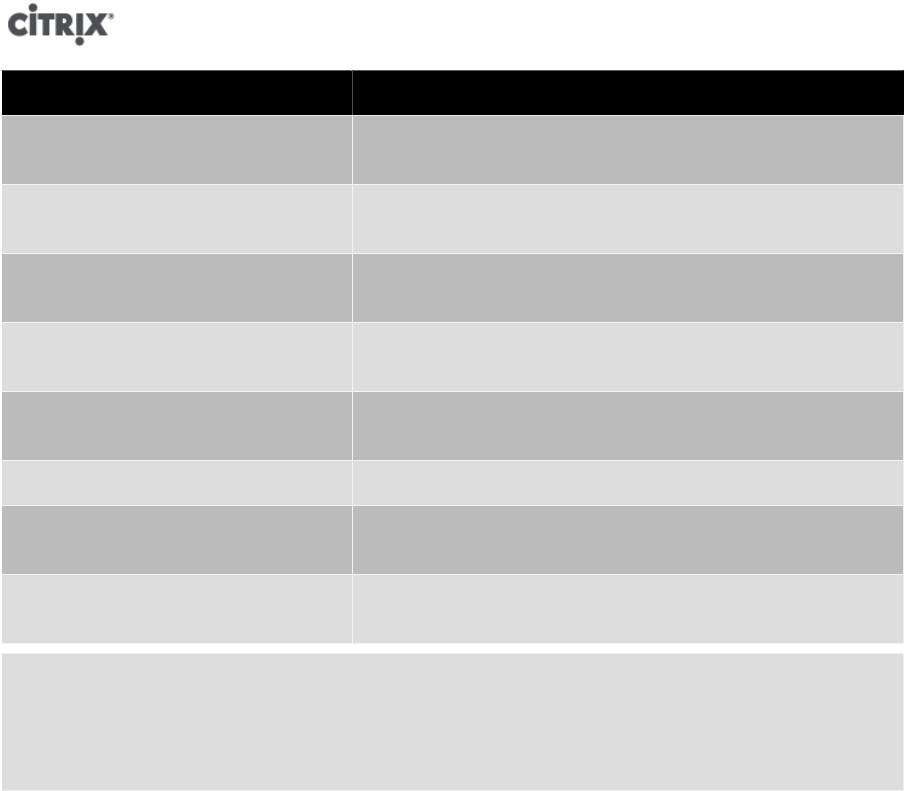
11
Template Name Description
Windows Server 2003 (32-bit) Used to install Windows Server 2003 SP2 (32-bit). The Server,
Enterprise, Data Centre, and SBS editions are supported.
Windows Server 2003 (64-bit) Used to install Windows Server 2003 SP2 (64-bit). The Server,
Enterprise, Data Centre, and SBS editions are supported.
Windows Server 2008 (32-bit) Used to install Windows Server 2008 SP2 (32-bit). All editions are
supported.
Windows Server 2008 (64-bit) Used to install Windows Server 2008 SP2 (64-bit). All editions are
supported.
Windows Server 2008 R2 (64-bit) Used to install Windows Server 2008 R2 and Windows Server 2008
R2 SP1 (64-bit). All editions are supported.
Windows Server 2012 (64-bit) Used to install Windows Server 2012 (64-bit).
Windows Vista (32-bit) Used to install Windows Vista SP2 (32-bit). The Enterprise edition
is supported.
Windows XP SP3 (32-bit) Used to install Windows XP SP3 (32-bit). Earlier service packs are
not supported.
Warning:
Experimental guest operating systems have received limited testing, may not be present
in future product releases and must not be enabled on production systems. Citrix may not
respond to support requests regarding experimental features.
4.2.1. Attaching an ISO Image Library
The Windows operating system can be installed either from an install CD in a physical CD-ROM drive on the
XenServer host, or from an ISO image. See Appendix C, Creating ISO Images for information on how to make an
ISO image from a Windows install CD and make it available for use.
4.3. Using XenCenter to Create a VM
To create a Windows 7 (32-bit) VM:
Note:
The following procedure provides an example of creating Windows 7 (32-bit) VM. The default
values may vary depending on the operating system that you choose.
1. On the XenCenter toolbar, click the New VM button to open the New VM wizard.
The New VM wizard allows you to configure the new VM, adjusting various parameters for CPU, storage and
networking resources.
2. Select a VM template and click Next.
Each template contains the setup information needed to create a new VM with a specific guest operating
system (OS), and with optimum storage. This list reflects the templates that XenServer currently supports.
Note:
If the OS that you intend to install on your new VM is compatible only with the original
hardware (for example, an OS installation CD that was packaged with a specific computer),
check the Copy host BIOS strings to VM box.
